- 1. Where to Find 'Em
- 2. Choose, Catch, Or Scrounge Your Crayfish Bait
- 3. How To Catch Crawfish: Tactics and Strategies
- 3.1. The Neanderthal Method: Pick up rock, look under rock
- 3.2. The Cro-Magnon Strategy: Improvise with available resources
- 3.3. The Enlightened Homo Sapiens Approach: Build or buy a crawdad trap
- 4. How to make a crawfish trap?
- 4.1. DIY Crawfish Trap Designs
- 5. Tips For Keeping Crayfish Fresh
- 6. How to Eat 'Em
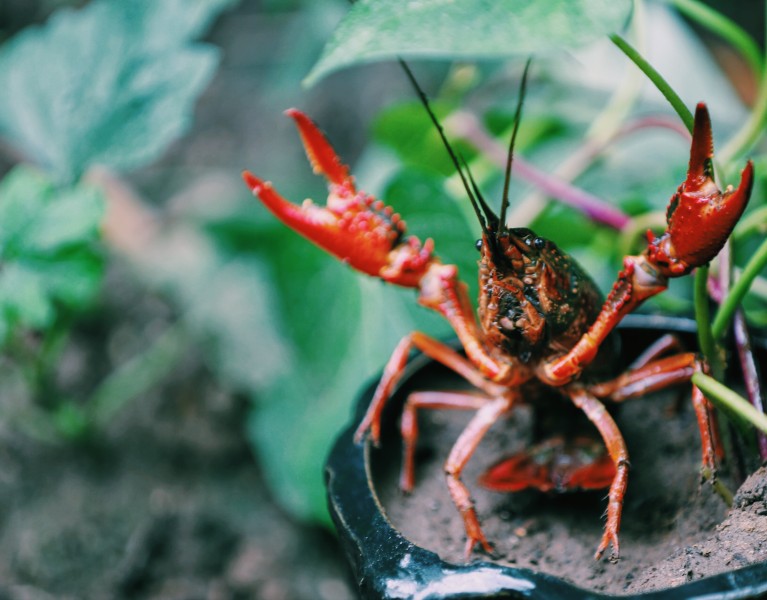
Let's Go Crawdaddin'! How To Catch And Cook Crayfish
Table of Contents [Show]
Mudbugs. Crawdads. Crayfish, crawfish, freshwater lobsters. Your name for these ten-legged crustaceans says a lot about where you grew up, at least according to this computer-generated dialect map. I'll mix up the names so nobody feels left out.
Growing up in the 70s and 80s, when kids ran wild, I spent a lot of time coaxing crawdads out of our suburban creek. I didn't even know they were edible until much later when I was treated to a family-style Cajun crawfish boil. This is when I learned that my absolute intolerance of spicy food wasn't so absolute after all. I still can't eat anything with Taco Bell mild sauce, but give me a tray of mudbugs cooked with Zatarain's extra spicy recipe? Suddenly, I'm Daenerys, The Unburnt.
Where to Find 'Em
Of the approximately 600 crayfish species worldwide, more than half of them live in the continental States. With a little luck—or bacon—you can find them anywhere there's fresh or brackish water.
If you're on a lake or big river, look near a creek inlet or near the banks in the nooks and crannies under rocks and sunken logs. In marshy areas, they'll seek cover among reeds, cattails, and toolies. In smaller creeks and streams, look down! There's probably one hiding under that big stone right there.
Crayfish are a nocturnal sort, meaning at night they crawl about looking for anything that munch on—plants, algae, insect larvae, snails, fish. They spend most of the day hiding from predators, but they are super curious if there's something tasty nearby.
Choose, Catch, Or Scrounge Your Crayfish Bait
Roughly 40 percent of a crustacean's brain system is dedicated to processing smells, and crayfish use all their senses to "map out" their territory. Your crawfish trap bait is competing with all the food in their environment! If it doesn't smell like it's worth the danger, they won't make the trip.
My favorite technique for baiting a crayfish trap? When I'm cleaning a salmon or trout, I'll stuff the skins, heads, tails, carcasses, and guts into a mesh drawstring bag (or a wire bait cage) within a gallon-sized freezer bag. The whole package goes into the freezer until I'm ready to go trapping. The thawing bait works as time-release "chum," and keeps the crayfish from devouring the bait all at once. If you can only use one part of the fish, the head has the most oil and scent.
Too much effort? No problem. Raw hot dogs, bacon, or chicken wings work well enough for a line or trap fishing. Just don't use spoiled food. The crawdads will shoot you down.
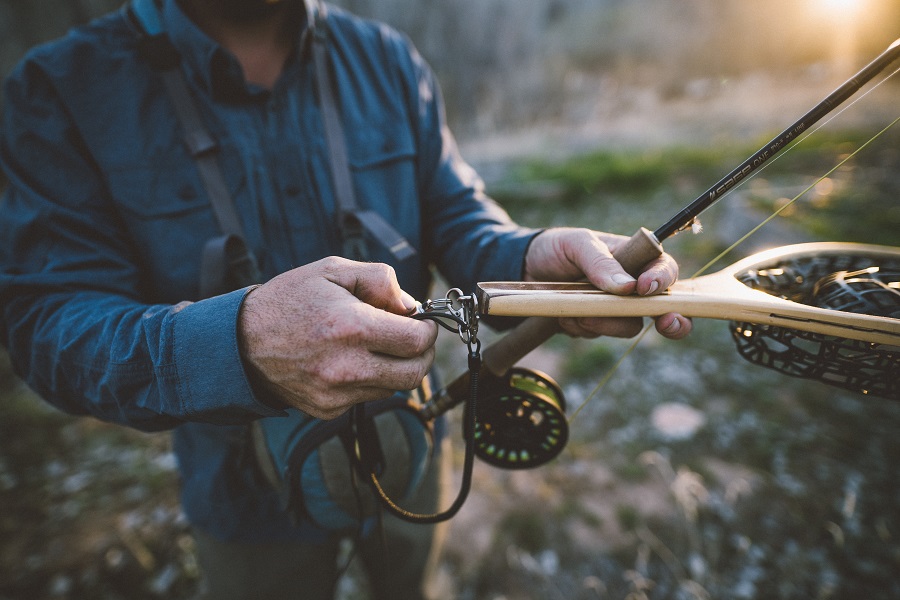
How To Catch Crawfish: Tactics and Strategies
The Neanderthal Method: Pick up rock, look under rock
If you wade around and (gently) lift up some rocks, you might catch one as it scurries to its next foxhole. Make it a team sport, with one person doing the lifting and the other ready to scramble. Fine mesh nets are helpful here, as they are with the next step in crawfishing evolution.
Hold them by their abdomens, but don't squeeze too hard. If you do get grabbed while messing with these little fellas, it'll hurt and everyone will laugh at you.
The Cro-Magnon Strategy: Improvise with available resources
All you need is enough string (any kind of string or fishing line; I've used shoelaces and paracord) to reach the bottom, with a few extra feet. You'll be dunking, not casting. On the other end, tie a paper clip (good) or a safety pin (better) to serve as a bait holder. These make it easier to hold boneless bait. If you have neither, or you're using tougher bait, just tie it directly on the line.
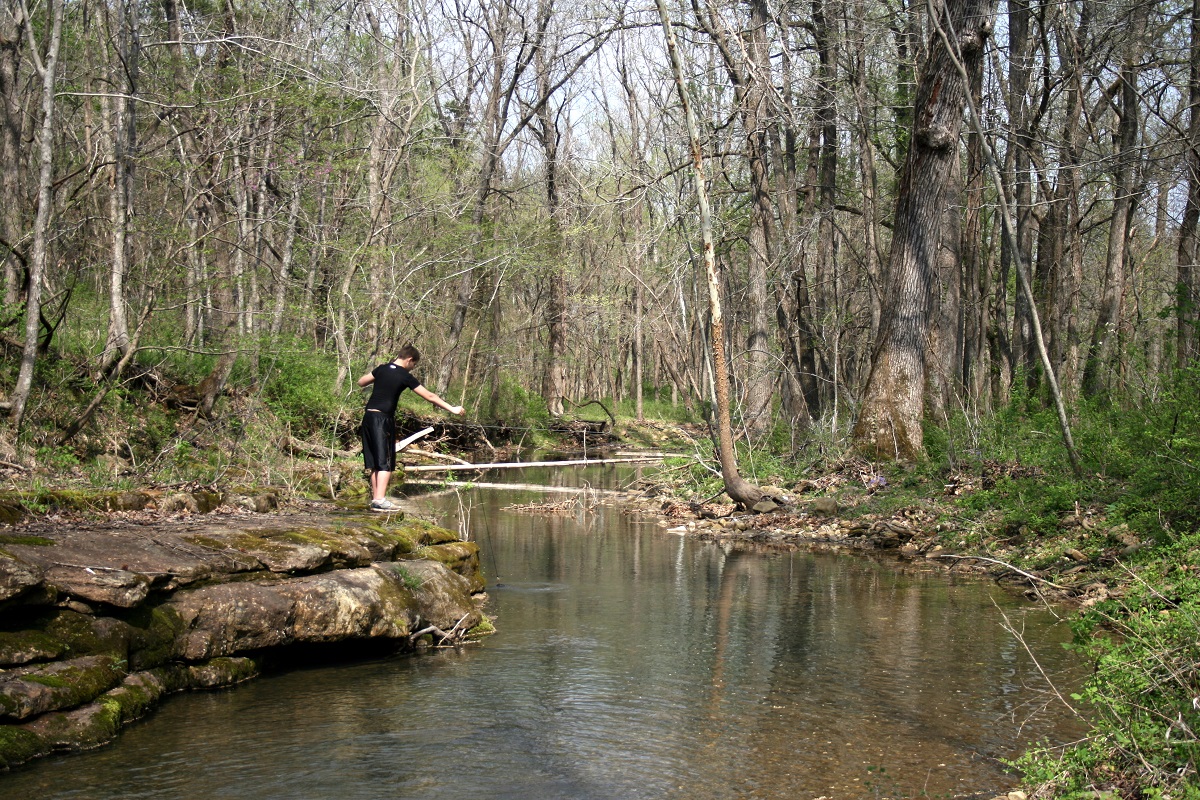
Now, drop your bait in a likely spot near some stones or other cover. If the water's clear enough, you can watch the crawdads come check out their "supply drop." Is the water too murky? Wait for little tugs on the line and slowly pull up (or in) the line. They'll let go once they hit the surface, so be ready with a fine net or pail. Avoid casting a shadow over the water—it freaks them out.
The Enlightened Homo Sapiens Approach: Build or buy a crawdad trap
This is my favorite crayfish catching method, since I can catch crawfish while doing other stuff. Trapping's pretty straightforward: Choose your design and your bait; make a marker buoy from a quarter of a brightly-colored pool noodle (or pretty much anything that floats); and drop your trap where it won't get hit by a boat or a current. In a few hours or the following morning, haul 'em in!
How to make a crawfish trap?
Crayfish traps are ridiculously easy to make. Since multiple traps are never a bad idea, I challenge you to take the DIY option. Then, you can challenge your buddies, your partner, or your kids to make their own and have a derby the next time you go out.
Before you buy or build, though, check your local fishing regulations. There may be restrictions on trap dimensions and entrance sizes, and some require that you affix your name and phone number on each trap or buoy.
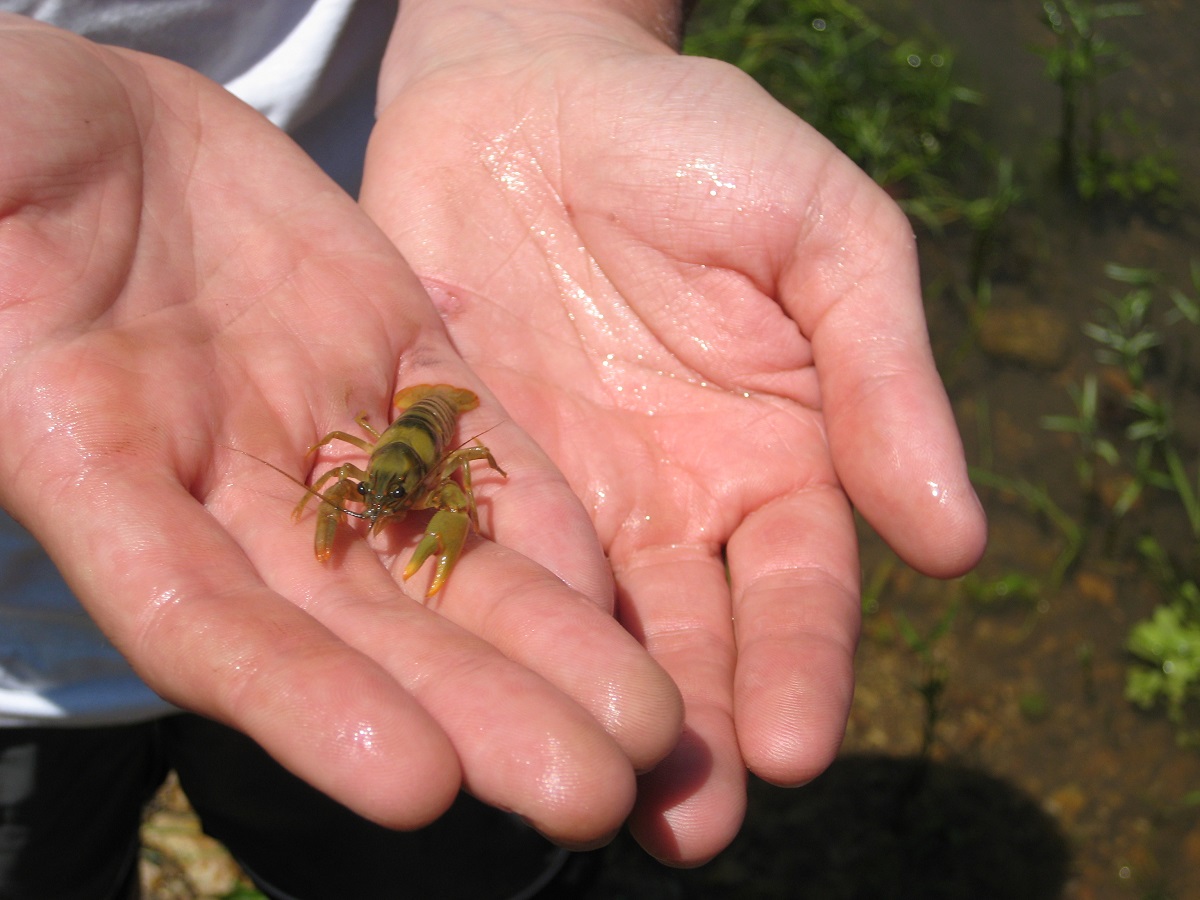
DIY Crawfish Trap Designs
There are several different types of DIY crawfish traps to consider. The most popular is to use either plastic bottles or mesh wire sheets. You can likely create a plastic bottle trap using materials you already have in your house, but this will limit your catches to smaller crawdads. Experiment with different traps of different sizes, and see what works best for you!
These are my favorite homemade crawfish traps:
Making a DIY Crawfish Trap with Chicken Wire
Hardware cloth cylinder: A very easy and effective DIY design. Cylindrical traps snag less than cube shapes.
Materials You’ll Need
- One large sheet of chicken wire (2x3ft)
- Two rubber bands
- Zip ties
- Sturdy thin rope or string
- Plastic bottle
- A short piece of wire
- Wirecutter
- Needle nose pliers
Instructions
- Use chicken wire with holes ½ inch by ½ an inch. Cut the wire 43 inches long and 48 inches wide.
- Roll the wire lengthwise to form a cylinder with a few squares overlapping. Use zip ties to secure the cylinder together. Cut off excess material from the zip ties.
- Cut two more squares of chicken wire. Each side of the square should have 21 squares.
- Find the center point within each square. Cut the squares from one corner to the center.
- Wrap the square together by overlapping the flaps. This should create a tight cone shape.
- Slide each cone into one end of the wire cylinder, with the tip two to four inches into the cylinder. Once the cone is the correct shape, secure each cone with zip ties. Trim off any zip tie excess.
- Cut off the tip of the cone to create a hole that the crawfish will crawl through.
- Secure the cone onto the cylinder with zip ties. Cut off excess zip tie length. Also, cut off extra wire from the cone. The cone’s wire aligns with the flat end of the cylinder.
- Create a carrying handle with zip ties or wire.
- Now you’ll need to create a door for removing your crawfish. Cut out a square from the cylinder, about 8 squares wide, and 8 squares long.
- Use your extra wire to create a door slightly larger than where you’ve cut, about 9 squares by 9 squares.
- Secure the bottom part of the door to the cylinder using two zip ties on each end. Trim the zip ties.
- Apply two metal hooks to each end of the top of the door. These should latch right onto the chicken wire.
- To track your trap, attach an empty water bottle to your trap. Do this by wrapping a wire around the lip of the bottle, and tying it to a long, thin rope or string. Make sure the string is as long as the depth of the water you will be catching crawfish.
- Leave the trap for at least a couple of hours. Once satisfied with the length of time, retrieve the trap and see how many you were able to catch!
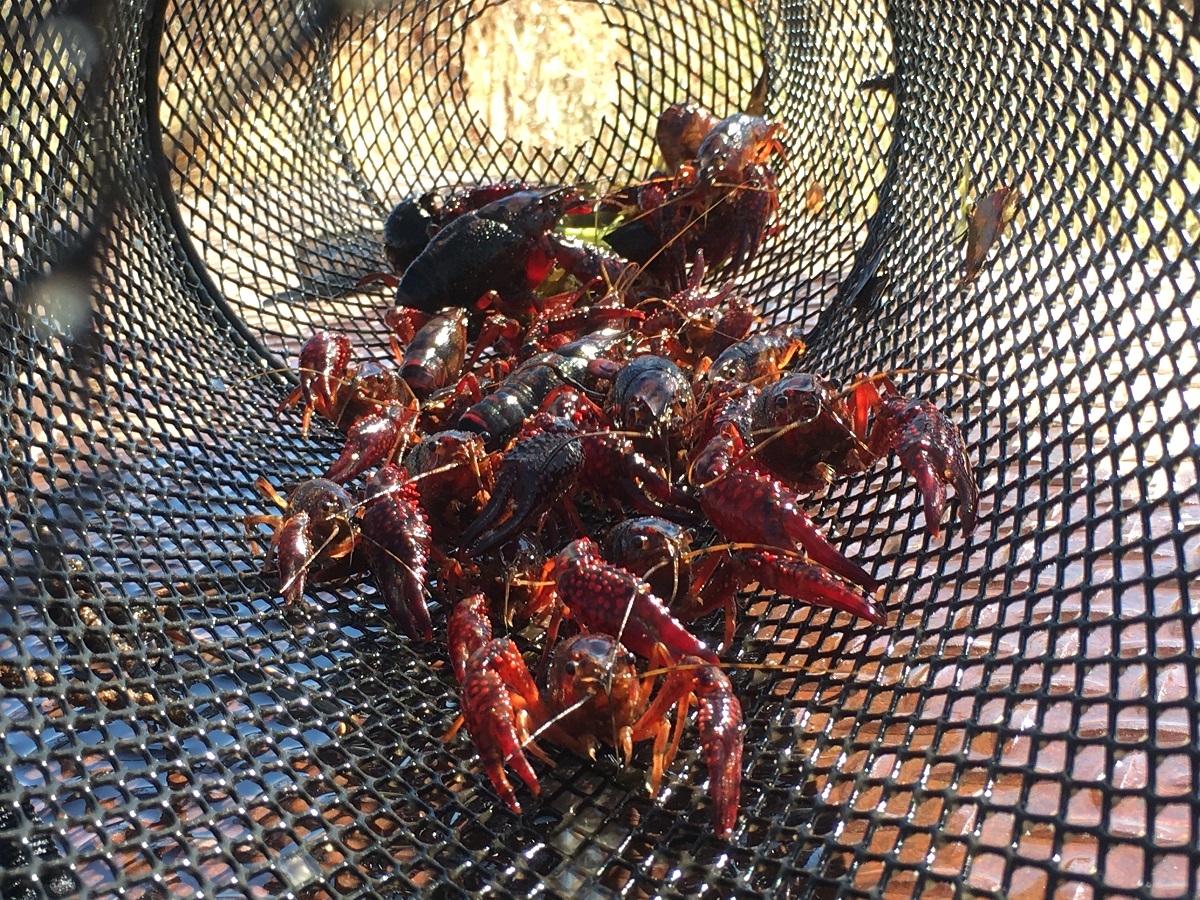
how to make a crawdad trap with a Plastic Bottle
Soda bottle minnow and crawfish trap: Quick and dirty DIY crawfish trap, and something you can throw together in a pinch. Plus, you get to pretend you're Les Stroud, scavenging for survival resources.
Materials You’ll Need
- 2 two-liter soda bottles
- Scissors
- Zip ties
- Two fishing weights
- Sturdy, thin rope or string
- Bait
Instructions
- Use two two-liter bottles. Make sure they’re clean and remove any labels or stickers.
- Use scissors to cut one of the bottles in half. Leave this bottle lid on.
- Cut the second bottle three-fourths of the way up. The top part of this bottle should be fairly short. Remove the lid.
- Fit the shorter bottle top into the other longer bottle top to create a funnel. The crawfish will be able to easily wander through the first bottle and enter the second bottle, but it will have a difficult time getting back out.
- Now it’s time to attach the bottles. Use a drill to create two tiny, matching holes in each bottle. String a zip tie through each hole to secure the bottles together. If the bottles are not as sturdily attached as desired, create two to four additional holes and zip tie together.
- Cut the extra material off from the zip tie.
- Use a zip tie to secure two fishing weights to your contraption, one on the top and one on the bottom. Your weights will likely need to be one to three pounds each to ensure the trap sinks to the floor of the riverbed, where crawfish typically spend their time. Experiment to make sure it sinks to the very bottom.
- Unscrew the cap on the top bottle and apply your bait. Screw the top back on so the crawfish will not be able to escape.
- Secure a long, sturdy string or thin rope around the bottle. It will need to be at least the length of the water’s depth. Tie the other end of the string to a tree or other stationary object and let the contraption sink to the bottom.
- Set the trap for at least a few hours, or overnight. Hopefully, when you check the trap, it will be filled with delicious crawfish.
Making a Pillow DIY Crawfish Trap with a Net
Torpedo shape minnow or crayfish trap: You've probably seen these at any big-box store that carries sporting goods. They're cheap, effective in both current or calm waters, and both ends nest together for easy storage. Several brands sell the same design for ten to fifteen dollars. Just be sure to get a trap with dark green or black coated wire for camouflage and durability.
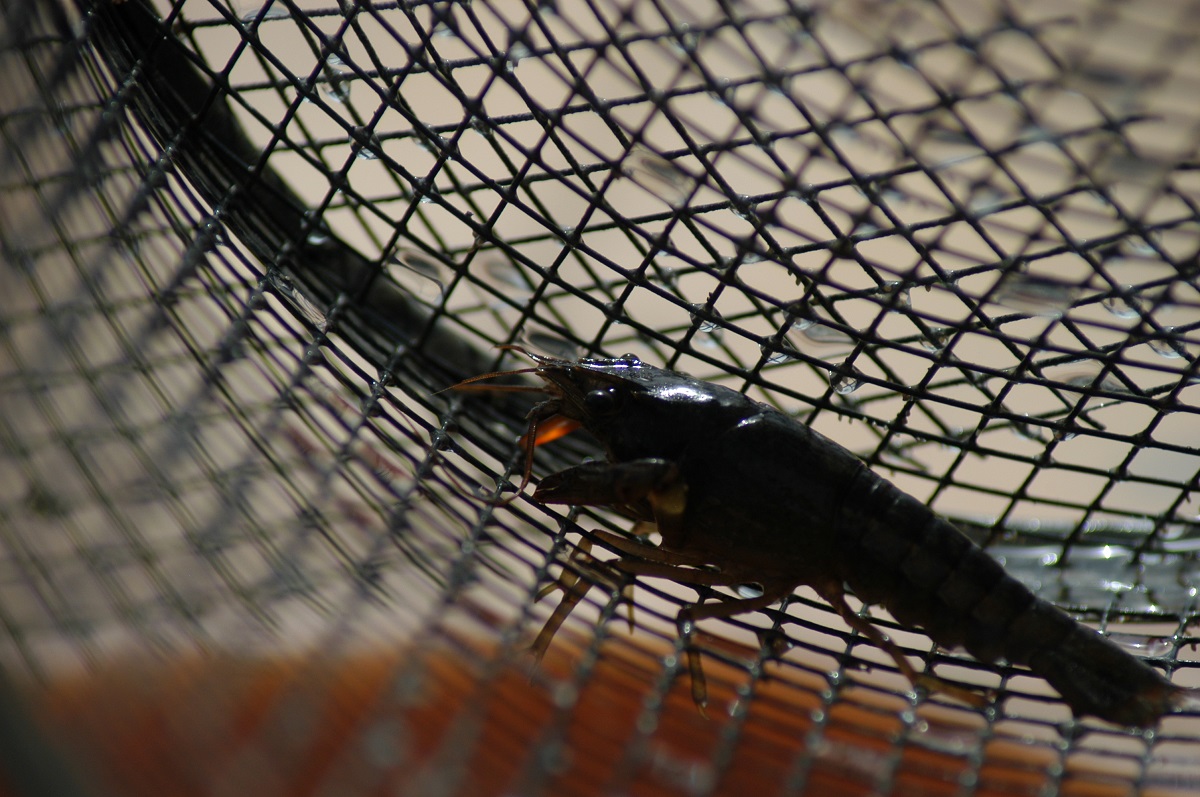
Materials You’ll Need
- Plastic mesh wire
- Zip ties
- Thin rope or string
- Cut your mesh wire into a rectangle about 50 inches wide and 55 inches long.
- Wrap the wire into an open cylinder and secure the overlapping material with zip ties. Cut excess zip tie material.
- At the top end of the open cylinder, zip tie half of the hole. Leave the opening that’s left on this end for now.
- At the bottom end, attach the center of the opening at the top and bottom of the circle. There will now be two openings at the bottom end.
- At the bottom end of the cylinder, push the two openings inwards toward the cylinder to create a funnel into the cylinder. Make the funnel opening smaller by securing the funnel portion further down with zip ties. This will be where the crawfish crawl into your trap, so make sure the hole is large enough for them to crawl through, but small enough to make it difficult for them to get back out.
- At the top part of the cylinder, you should still have an opening. This will be where you insert bait. Once bait is inserted, you can close this hole with some wrap around wires. Make sure the wires are removable as this is also where you will remove your crawfish.
- Ensure this sinks to the bottoms by securing a light fishing weight to the wiring.
- Tie a long, thin rope to your trap and tie to a tree. If there are no nearby trees, you can also tie your rope to an empty water bottle to use as a marker when retrieving your trap.
- After a few hours, or overnight, go back and check your trap.
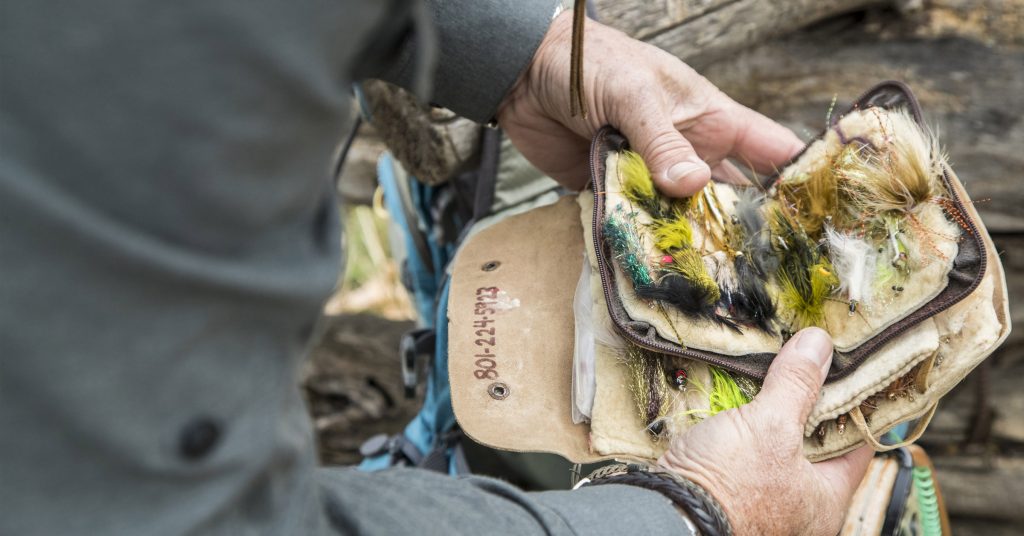
Tips For Keeping Crayfish Fresh
Crayfish use gills to collect oxygen from the water. Non-aerated buckets and cups of water rapidly lose oxygen, so it's best to keep your crayfish alive in an empty container placed in the shade. They can breathe just fine on land.
If you want your catch to purge their hindguts (the vein-like organ running along the top center line of the tail meat) don't bother with salt baths. They may be a tradition for some, but according to this Louisiana State University experiment, it's a waste of salt. A good rinsing or soak for a half-hour right before cooking will wash off any exterior debris. Any longer, and you'll want to use an aerator and non-treated water (chlorinated water will kill them). In any case, the gut is easily picked off the tail.
How to Eat 'Em
The simplest way to cook crayfish? Drop them into boiling water, and leave them until their shells turn bright red. Drain, and when cool enough to handle, follow these steps:
- Pull the tail flat
- Grip the tail behind the abdomen
- Shove the tail up toward the carapace (shell over the abdomen)
- Twist
- Pull
- Chomp the meat sticking out from the tail
- Suck the head (as they say in the Gulf States)
- Bonus: Crack the pincers with your teeth and suck the meat out if you don't mind the hassle
Confused? Watch this video for pointers. Now, you're going to have to find your own favorite crawfish boil, jambalaya, or etouffee recipes! Use them in your favorite seafood dish, or just eat them with melted garlic butter or hot sauce. By the way, this is a very easy way to get kids involved with fishing, since they can participate in every step of the process. Just go easy on the extra spicy when you're feeding your two-legged mudbugs.
Featured image by Stone Wang.


